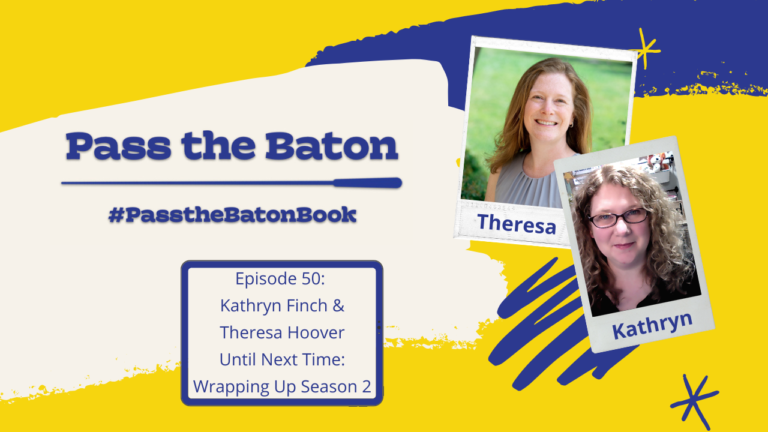This week, Kathryn and Theresa talked to Dianne Nelson, a choral teacher at Talmadge Middle School in Independence, Oregon. Dianne has experience in a variety of settings, including degrees in biology and music education, teaching experience in early childhood and Waldorf settings, and a current position teaching music pedagogy at Western Oregon University. One of Dianne’s passions in education is project based learning, which she shared about in this interview.

What is Project Based Learning?
To explain project based learning (PBL), Dianne started by explaining what it is not. PBL is not a stereotypical project where one person does most of the work and it’s not a “dessert project,” where the project is the end cap of the unit. PBL is hands-on, collaborative, and teaches real-world skills in real time. The unit is the vehicle for learning, not the end cap to show what you’ve learned. PBL takes place over a long period of time, requiring a good amount of scaffolding, differentiation, and planning from the teacher’s perspective. In PBL, students are solving a real-world problem.
[In PBL] the unit is the vehicle for learning, not the end cap to show what you’ve learned.
What Does PBL Look Like in Music Classes?
For Dianne, she works to create “Off the Octavo” projects, where students are going beyond what’s on the printed page. She finds this allows her to take a constructivist approach, working to teach the whole child, regardless of musical ability. One unit Dianne incorporates is about protest songs. Students learn what protest songs are, why they are necessary, and discuss if we still need protest songs today. This content is all tied into the repertoire students are singing, since there is such a rich history of protest music. Dianne will often make literacy connections in her PBL, especially since her school is an AVID school. Students discuss and debate topics throughout the unit, making connections to events taking place in the community and the world.
Another PLB unit Dianne has taught is music composition. Throughout the unit, students learn about the music fundamentals necessary to create a piece of music, the technology being used, and more. She has even done PBL units about folk songs, where students worked to create a modern definition of a folk song and discussed if folk songs still exist.
Why PBL?
By going beyond the octavo, Dianne incorporates the other standards, giving students the opportunity to respond to music, create music, and showcase their learning in more ways than a once-per-quarter concert. For Dianne, PBL does not replace music-making, PBL enhances it.
Dianne encourages collaboration through all of her projects. She allows students some choice in who their group members are, and some of it is random. This requires students to work with new people and understand that sometimes in life we have to work with people we don’t like!
One thing that always surprises Dianne is the students who become the leaders. Sometimes, these students aren’t the ones Dianne would have expected to lead. But this means they are taking ownership of not only their own learning but also ownership of keeping the group on task.
She also loves seeing the sense of accomplishment students feel when they have completed a hard task and have a finished product they are proud of.
PBL gives students the opportunity for students to practice a growth mindset. They can fail in a safe space, learning that failure isn’t a big deal. The worst that can happen is you re-evaluate and try something different! Through PBL, students learn about technology, collaboration, problem solving, and decision making. These real-world skills help students become good humans and are the heart of project based learning.
Dianne’s Advice to Teachers
First, teachers must know how to write a unit. You should start by determining the end goal, what you want students to learn. Dianne recommends looking at the standards and the repertoire to determine what to draw from and to find what’s missing that students need to know. It’s important to understand the difference between formative and summative assessment and what they look like in your classroom. Teachers must also know their students, knowing where differentiation will be necessary. Often projects evolve naturally, since the unit is the learning vehicle.
Dianne also recommends teachers pre-plan and scaffold. Determine milestones for students to achieve, instead of only giving them the final completion date. Having multiple formative assessments before getting to the final summative assessment is helpful for students. One part of PBL includes having a public presentation of learning. Having a clear vision of what success will look like for this presentation can help determine the scaffolding needs throughout.

Dianne believes “we’re better teachers when we collaborate with each other.” Just as we teach collaboration in PBL, we as music teachers should collaborate as well! To that point, Dianne has curated an impressive collection of resources to share with music teachers, containing information about project based learning and her protest song unit: Project Based Learning/Protest Song Unit Resources.
To learn more about PBL, and hear about some additional projects Dianne has done, check out the full interview here: Project Based Learning in Music Classes
Connect with Dianne:
- Email: DianneKNelson@gmail.com
- Facebook: Dianne K Nelson
- Project Based Learning/Protest Song Unit Resources



